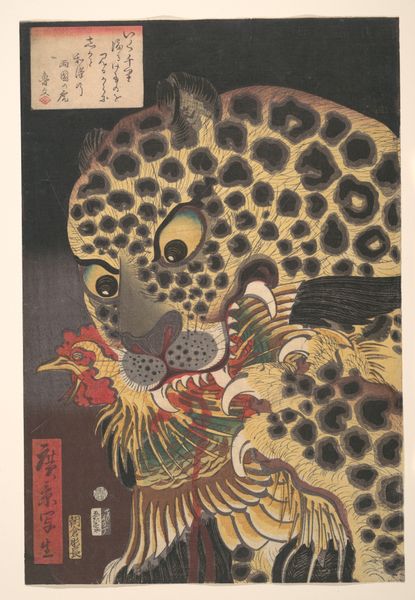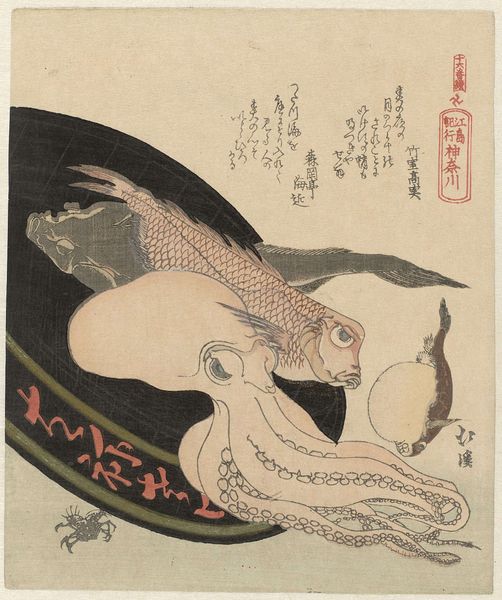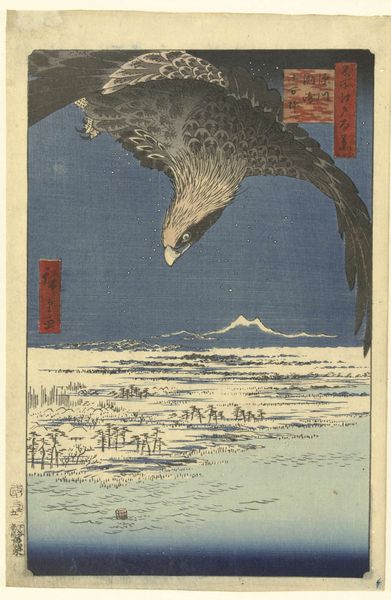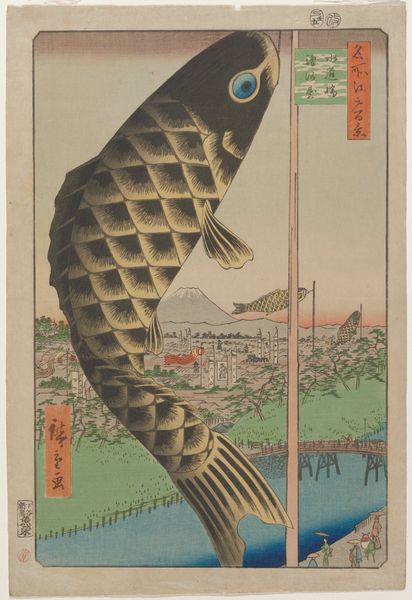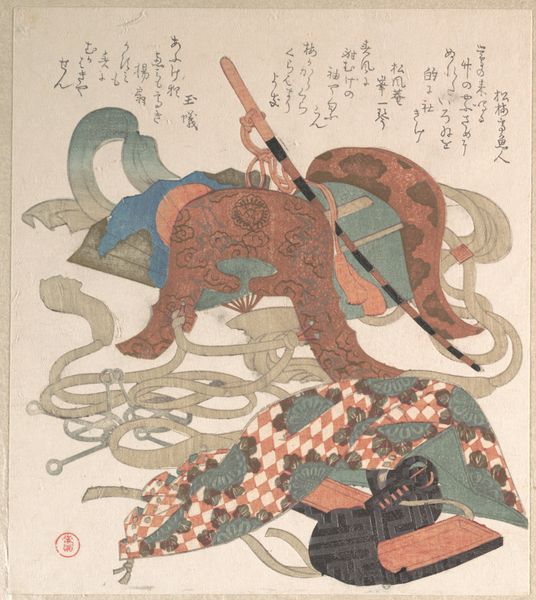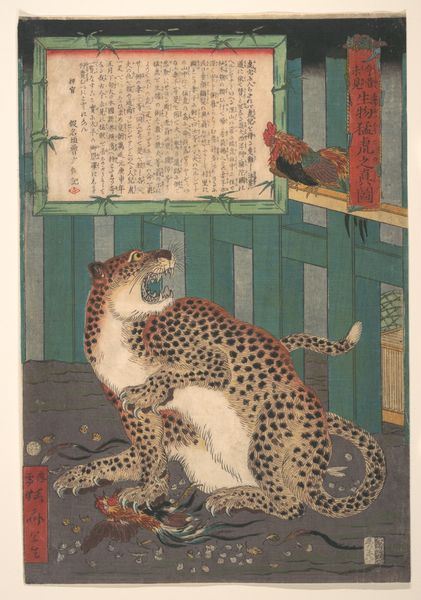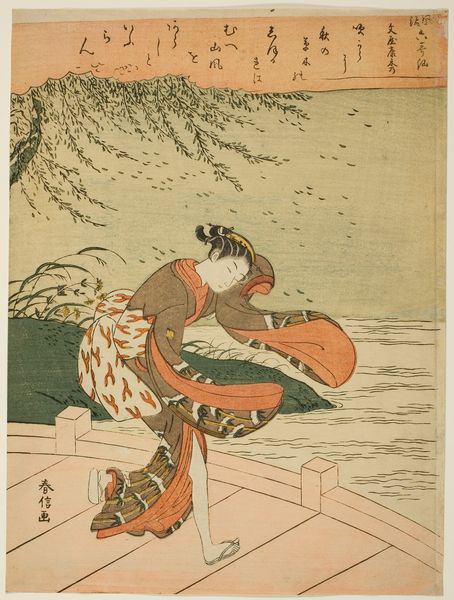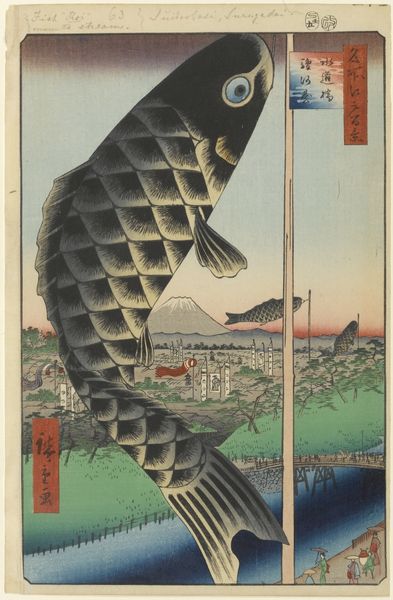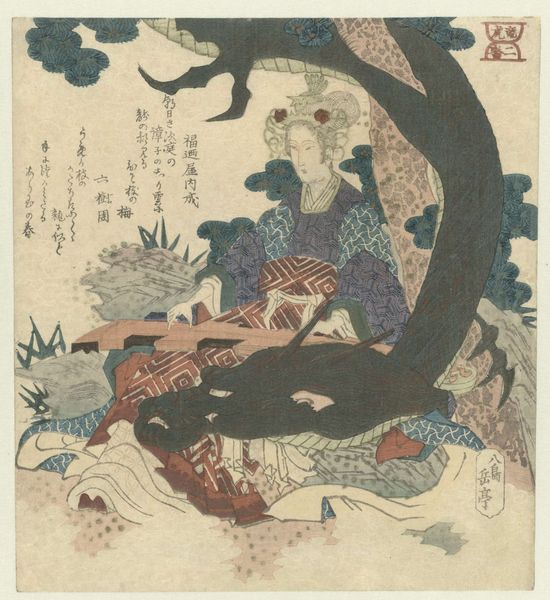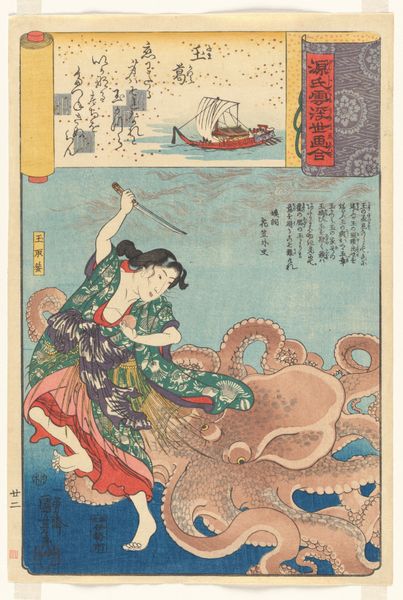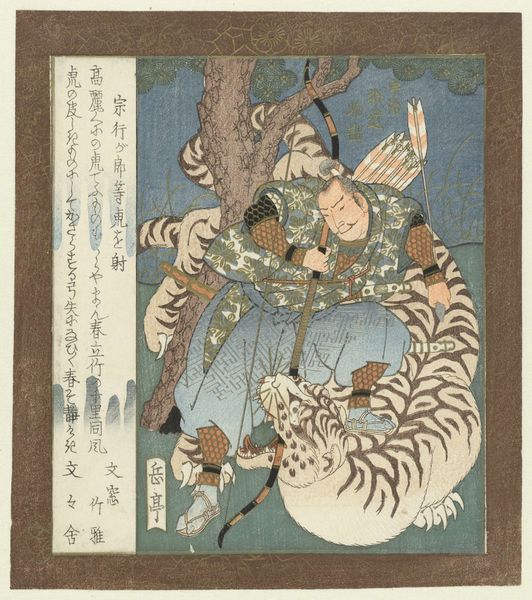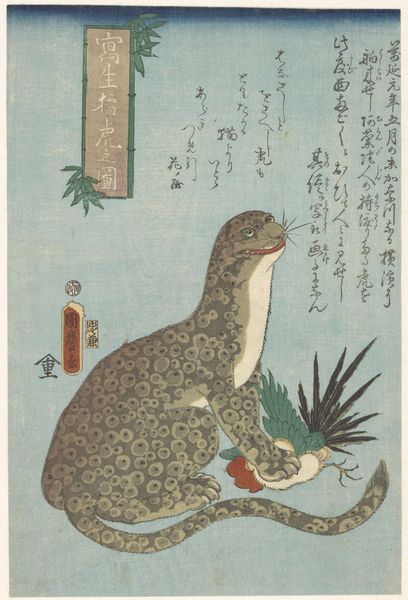
print, woodblock-print
#
animal
# print
#
asian-art
#
ukiyo-e
#
figuration
#
woodblock-print
Dimensions: Image: 14 x 9 1/2 in. (35.6 x 24.1 cm)
Copyright: Public Domain
Curator: The sheer energy emanating from Ichiryūsai Yoshitoyo's woodblock print, "Tiger in a Cage," created around 1860, is striking. Editor: It does feel frenetic, doesn't it? A caged tiger lunging, seemingly enraged. The rooster, or perhaps roosters, flying, feathers everywhere. It’s chaos captured on a flat plane. What's interesting is the visible wood grain that comes through some parts, and also some parts feel much smoother. It’s a great study in contrasting material processes in print making. Curator: It is. But there’s so much to unpack culturally, especially if we look at the broader socio-political landscape of Japan at that time. The late Edo period was marked by growing social unrest and resistance to the Tokugawa shogunate. Animals, especially tigers, often symbolize power, both destructive and protective, and could represent these social forces. Editor: Interesting, so the act of caging then can serve as commentary on repression in broader society. It also appears that this print uses multiple blocks to build up the textures of the scene. You can almost see the wood itself pushing back against being used to create such a wild and frantic scene. Curator: Absolutely, and if you look closely, you’ll notice that it is more likely that there were at least two roosters depicted. Birds and roosters were symbols often of bravery and vigilance in Japanese culture, juxtaposing this predator against symbols of social awareness speaks of a turbulent time in Japanese culture. It suggests themes of struggle and possibly even revolution. Editor: I like that consideration of multiple print runs that you pointed out – there seems to be some very subtle colour variances between sections within each shade. Each new addition shifts the overall colour a bit more and builds that depth. It all comes from a slow iterative labor with each level impacting the end work’s message as well as its composition and appearance. Curator: Understanding the materials—wood, ink, paper—along with the historical context offers insight into the powerful cultural messages Yoshitoyo conveyed to a public facing upheaval and transformation. The woodblock-print itself, as a medium, democratized artistic production; enabling broad dissemination and reinforcing collective feeling during intense sociopolitical shifts. Editor: A brilliant summary. Looking beyond its simple composition this piece certainly captures tension in a really unique way.
Comments
No comments
Be the first to comment and join the conversation on the ultimate creative platform.
